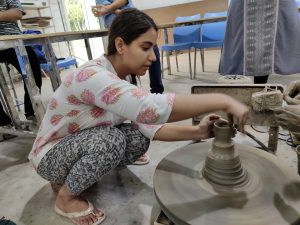Usually, this is the time young students write entrance exams, consider which colleges to apply to in India, or make plans for studies abroad. But there’s nothing usual about the times today. The Covid-19 pandemic has shocked the world.
The pressure on students and higher education institutions is high. Schools and universities have been closed and exams postponed. Classrooms are going virtual and admissions for the upcoming academic year are fraught with confusion. According to UNESCO, over 320 million students in Indian schools and colleges are currently impacted.
The pandemic has pushed the world to drastically reinvent ways of coping with the ‘new normal’. After the initial phase of complete overhaul, it is critical to understand the short and long-term impact and future measures. Can India emerge from this crisis with a refreshed perspective and boost to higher education?
Online learning is here to stay
An immediate and effective response to the crisis was to go digital. Developing robust online platforms has become necessary to offer continuity in learning. Yet in a developing country like India with vast disparity in socio-economic backgrounds of students and the quality of educational institutions, the shift has not been easy. The digital divide has been further widening the gap, and needs urgent attention from both public and private sector players as the crisis continues. Good teachers, refreshed curricula and effective tools will ensure students stay involved and active in the learning process.
More Indian students will stay home in India
Lakhs of Indian students have increasingly chosen to pursue higher education abroad. As per reports, India is the second-largest source of international students in the world. This usual exodus is likely to transform—at least in the immediate few years—to an influx into Indian institutions, given travel restrictions and health risks.
This means that crores of rupees and resources spent in foreign education could potentially be retained in the country, as more students look towards options at home. While international institutions might bear the brunt of the change, it is a remarkable opportunity for India to enhance its capacities and offer quality education at par with global standards.
The effects of a shrinking global economy
The economy has taken a severe hit, and its ripples can be felt in the education sector as well. While many students will chart alternative paths, the pandemic is also leaving others in limbo. As unemployment is predicted to increase and the financial capacity of Indian homes comes under stress, the country can expect a drop in enrolments and challenges with tuition fees. Public institutions too, may be under threat of reduced funding. On the flipside, the pandemic could also prompt reform in fee structures and creation of more cost-effective programmes.
New trends in teaching & learning will emerge
Beyond the top band of institutional excellence with private universities setting best practices, Indian academia has been in need of transformation, long before the onset of the pandemic. There is an opportunity to rethink the traditional education system now.
Digital learning is leading the charge as a mainstay, and many new trends are picking up momentum across the globe. Multidisciplinary and modular pedagogy that afford transferable skills and customised learning will succeed. Post-pandemic times could see a blend of e-learning and mainstream face-to-face teaching with a boost from traditional universities and the ed-tech sector.
A call for greater global collaboration between students, academia & industry
Opportunities for student mobility and practical exposure through exchange programmes, internships, participation in conferences, and more could likely be off the table for some time. Innovative new forms of collaboration and alternative paradigms are needed to drive learning, research and teaching. Sharing of knowledge between institutions globally through joint-teaching, virtual guest lectures, etc. could give students an enriched global perspective in these difficult times.
Will educators rise to the challenge?
A paucity of contemporary teachers has been a pressing challenge already, and it is growing more serious. Faculty are being called upon to redesign course content to meet the current and future needs. Moving away from traditional pedagogies in most average institutions, the demand for quality educators will shape the way higher education moves forward from this crisis.




